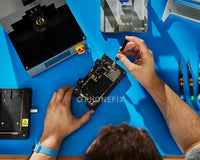Is your car’s instrument cluster acting up? Maybe the speedometer isn’t reading right, the fuel gauge is stuck, or the screen stays black. Beyond comfort, your cluster provides critical safety information: speed, warnings, fuel level, charging, and more. Nothing is more frustrating and anxiety-inducing than the dashboard losing zero at the most inopportune moment.
What are the symptoms of a dashboard malfunction?
1. Dead screen/backlight: Blown fuse, loose power connection, or faulty backlight bulb.
2. Erratic gauges: Loose wiring, bad sensor, or damaged circuit board.
3. Dim or flickering lights: Burned-out bulbs or a weak ground connection.
4. Warning lights stuck on: Faulty sensor or wiring issue.
How to Repair?
1. Gather Your Tools.
Basic screwdriver set.
Multimeter.
Plastic pry tools.
Replacement parts: Bulbs, capacitors, or a new sensor.
Safety gear: Gloves and eye protection.
2. Disconnect the Battery.
Never work on electrical parts with the battery connected, you could short-circuit the cluster or hurt yourself. Locate your car’s battery and disconnect the cable. Tuck it away so it doesn’t touch the positive terminal.
3. Remove the Instrument Cluster.
Use Car interior pry tools to gently pop off the trim around the cluster. Once the harnesses are disconnected, carefully remove the cluster from the dashboard.
4. Check the dashboard.
Issue 1: Burned-Out Bulbs (Dim/Flickering Lights).
Look for bulbs that are blackened or won’t light up when tested.
Replace the bulb and test before reassembly reconnect the wiring harnesses temporarily and reconnect the battery. Turn on the car to check if the new bulb works.
Issue 2: Loose or Damaged Wiring.
Loose wires are also a top cause of erratic gauges or dead screens.
Check the plugs on the back of the cluster for bent pins, corrosion, or loose wires. If you see corrosion, clean it with a small brush and electrical contact cleaner. And test connections with a multimeter, you should see 12V, if not, the problem is in the car’s wiring.
Issue 3: Faulty Capacitors.
Aging capacitors can cause screen blackouts or gauge failures. Open the cluster and access the circuit board, look for capacitors that are swollen, leaking, or bulging at the top.
If a damaged capacitor is found, use a soldering iron desolder the old capacitor and solder the new capacitor.
5. Reassemble the Cluster.
Once you’ve fixed the issue, put the cluster back together, reconnect the wiring harnesses, pop the trim back into place (or screw it in) and make sure it’s secure, and eeconnect the battery.
6. Final Test.
Turn on the car and check. Do all gauges work correctly? Is the screen/backlight on? Are warning lights functioning normally?
If the problem is still there, double-check your work . If you’re stuck, it might be time to consult a professional, some issues need replacement parts.
Most instrument cluster issues, such as loose wiring, faulty bulbs, or aging capacitors. If you notice any problems with your dashboard, don't ignore them; check and troubleshoot as soon as possible. When it fails, it’s not just annoying, it’s a liability.
Why Your Car’s Instrument Cluster Fails










